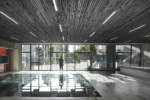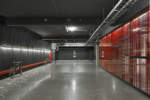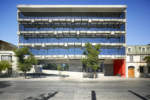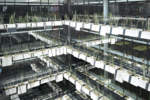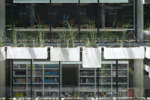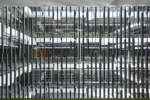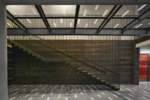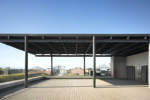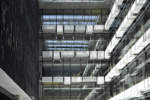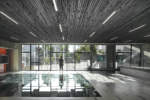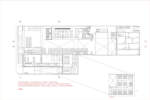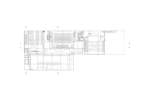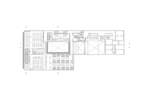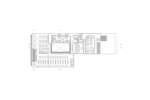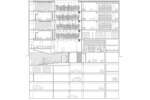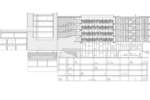architect: Mathias Klotz
location: Santiago, Chile
The Diego Portales University is a non-profit private organization that has been founded in Chile 27 years ago. It is located in the center of Santiago, in an area called Santiago Sur Poniente. The area was picked because of its strategic location: it laid next to the intersection of the two most important subways lines. Moreover, during the time, it was very easy to find big houses at a reasonable prize that would satisfy the initial requirements.
In 2003, with 12000 students and 20 years of history, the UDP was forced to increase its territory, adding 60.000 meters to its total area. They hired me to advise and to coordinate the operation of this new plan. At the same time I was designing three of the nine projects that formed part of this new plan, which are: The Mix-Use Building, the School of Medicine, and the School of Economics and Management. The biggest challenge of this project is that it had to be executed in two years. The site counted with existing buildings, some of historical content, some recyclables, and finally, some worth of demolition. Faculty members of the UDP School of Architecturewho were younger than 40 years old, were hired to develop the project under collective principles determined ahead.
The goal was that all the different projects were seen as a whole and that they become a symbol of the University’s identity, which embodied a responsible and sustainable architecture that is aware of its surroundings. This was linked to the current admission campaign of the university, which is focused on its location and architecture. The success of the operation was such that it became the biggest private effort for the recuperation of a historical site in Santiago. It also integrated a new construction code which encouraged the preservation of historical buildings in the area. In order to promote the protection of the environmental heritage of the neighborhood, the buildings should not exceed seven floors of height.
Currently the neighborhood is denominated as “The Bus” (Barrio Univesitario de Santiago/ University Neighborhood of Santiago).
Later on, the construction of the Central Library was assigned to me. Its construction began in January 2010. This new building worked as a complement to the already completed Mix-Use Building. It offers continuous movement around the interior of the block, thus establishing a secondary circulation system for the pedestrians. This new circulation system is parallel to the public circulation along the street, which is full of 10.000 students that move around the neighborhood every day.
Because this area is highly occupied, both the Library and the Mix-Use Building focus on bringing in natural light and air to the interior spaces.
In order to achieve that, passive systems and clear materials that reflect and filter the light have been used. The opaque coverings have been used in habitable zones, inserting public programs, gardens and relaxing areas. The Mix-Use Building, which faces the EjercitoStreet, has been built on the backyard of a house of the 40’s. In order to preserve the street’s dimensions, the Mix-Use Building maintains and restores the house. On the other hand, the new Library, which lies on the Vergara Street, uses an empty lot, where an unimportant and light structure used to be. The new building shows up as a green volume, whose vegetation works as a solar filter to the western orientation. It also represents symbolically the responsible attitude of the institution, which, with this building, applies for a LEED GOLD certification for the first time in its history. The Library becomes the first and only university building in Chile developed under these parameters. In the interior, the facades that are exposed to the sun are also protected with vegetation. The coverings are treated with a natural meadow, which reference to what used to be the Santiago Valley, which existed before the arrival of the conquerors.



